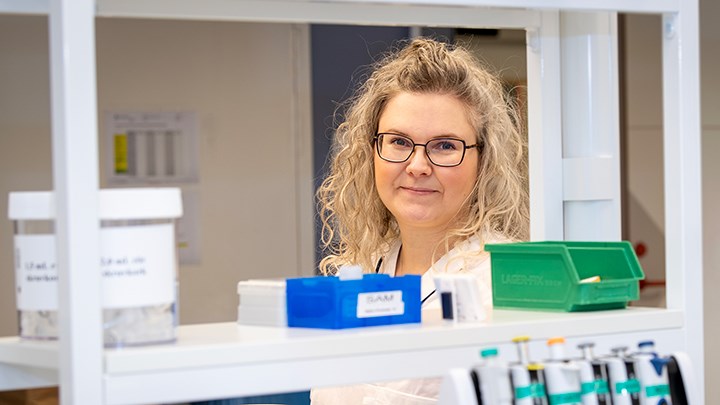Study shows how biomarkers can be used in cancer care

Alvida Qvick has shown how biomarkers can be used in different areas of cancer care by analysing substances released into the blood as tumours grow. “It allows us to customise treatment and streamline the monitoring of our patients’ health,” she says.
In her doctoral thesis in biomedicine at Örebro University, Alvida Qvick tested four methods for detecting so-called circulating biomarkers, which have shown promise in several studies.
One study involves detecting in the blood the remains of tumours in the head and neck area caused by the human papillomavirus (HPV).
“Our method has been shown to have high sensitivity for detecting HPV, and the study is now focused on patient follow-up. The study is designed so that if we get increasing values in two consecutive samples, we contact the treating physicians with this information. Physicians have even asked for the results before patient visits, which is very promising,” says Alvida Qvick, who has also studied circulating biomarkers in patients with lung cancer.
Non-specific symptoms
In another study, Alvida Qvick investigated the methylation of genes secreted by tumour cells. Methylation is a process that affects how cells produce proteins, and by analysing this process in patients with severe non-specific symptoms, researchers have identified differences between those with cancer and those without.
“It was unexpected that we could see such clear differences in methylation between cancer patients and patients with severe non-specific symptoms. This reinforces how robust circulating biomarkers can be in distinguishing cancer from other diseases,” she says.
Possibility of a faster response
The principal benefit of this research is that it can transform how cancer is diagnosed and treated. For patients who cannot undergo tissue sampling – for example, if the tumour is difficult to access – a simple blood test can provide valuable information on diagnosis and treatment options. This allows for quicker test results, more personalised treatment, and more efficient patient follow-up.
“It’s incredibly exciting to discover something new and transform knowledge into practical patient benefits. Our research can potentially improve cancer care in many ways,” says Alvida Qvick.
Circulating biomarkers and cancer
As a tumour grows and new tumour cells form and die, various substances are released into the bloodstream, called circulating biomarkers. These have the potential to be used as markers for cancer at many different stages of diagnosis, from screening, diagnosis, and treatment alternatives to follow-up.
Methylation
DNA methylation is a process that controls which genes are active and which are switched off – like a switch for genes. All cells have the same genome and genes, but thanks to methylation, a skin cell and a muscle cell use different genes to perform their different tasks. The same is true for a cancer cell seeking to change which genes are active so that they are most beneficial to the tumour.
Text: Elin Abelson
Photo: Maria Bergman
Translation: Jerry Gray
